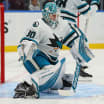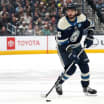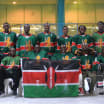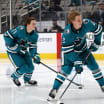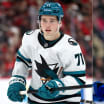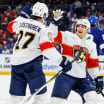TAMPA -- No one had to tell Lars Eller how lethal the first power-play unit of the Washington Capitals can be before he started filling in for injured center Nicklas Backstrom two games ago.
"I spent a lot of time last year killing against that unit [in practice]," Eller said Saturday, "so I kind of know what it is like to be on the other side."
Capitals power play making difference in playoffs
Washington leads NHL with 15 man-advantage goals entering Game 2 against Lightning
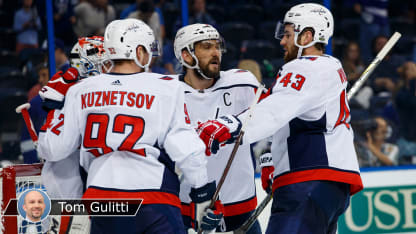
RELATED: [Complete Lightning vs. Capitals series coverage]
That's the Tampa Bay Lightning's problem now in the Eastern Conference Final. After Washington's power play went 2-for-4 in a 4-2 win in Game 1 on Friday, Eller was careful not to talk much about the keys to its success with Game 2 of the best-of-7 series coming up at Amalie Arena on Sunday (8 p.m. ET; NBCSN, CBC, SN, TVAS).
But here's one obvious thing he was willing to say: In this series, the Capitals power play can be the difference-maker.
"It's very important," Eller said. "It's hard to say, 'How important is it?' But one goal can change a game, and one game can change a series."
One power-play goal certainly changed Game 1. After Tampa Bay had a potential tying goal from Nikita Kucherov with 7.1 seconds remaining in the first period disallowed because the Lightning were called for having too many men on the ice, Washington needed 1.8 seconds to score on the power play, with Alex Ovechkin's one-timer from the high slot with 5.3 seconds left.
Eller scored on a rebound of T.J. Oshie's shot 6:42 into the second period for another power-play goal that made it 4-0, making clear their ability to exploit the Lightning's struggling penalty kill.
Tampa Bay has allowed 10 power-play goals in 35 times shorthanded in the Stanley Cup Playoffs, a 71.4 percent rate that is the lowest of any team that got past the first round of the playoffs. The Lightning ranked 28th during the regular season at 76.1 percent. In Tampa Bay's past six games, five against the Boston Bruins and Game 1 against the Capitals, the penalty kill has allowed seven goals in 16 times shorthanded (56.3 percent).
The Capitals lead the NHL with 15 power-play goals in the playoffs and have scored on 32.6 percent of their 46 opportunities. Washington has scored at least one power-play goal in 11 of its 13 games.
"We just execute our plays all the time," Ovechkin said Friday. "If we have a chance to do something, we will. You see [Backstrom] is out of the lineup and he was a big part of it, and Lars is stepping up and played great."
Backstrom, who is recovering from a right-hand injury, usually switches back and forth with Evgeny Kuznetsov in running Washington's first power play from the right half-wall. Eller has taken his place in that spot.
Like most teams, the Capitals use a 1-3-1 alignment on their power play; defenseman John Carlson is at the point, Ovechkin usually in the left circle, Oshie in the slot, and either Backstrom (now Eller) or Kuznetsov on the right half-wall, with the other center down low to the right of the net.
The personnel play a significant role in the unit's success. Ovechkin, 32, is 10th in NHL history with 229 power-play goals in the regular season and has scored 19 in the playoffs, including four this year.
Carlson leads the NHL with 10 power-play points (three goals, seven assists) in the playoffs. Ovechkin (four goals, four assists), Oshie (four goals, four assists), and Backstrom (eight assists) are tied for second with eight power-play points, and Kuznetsov has seven (two goals, five assists).
Another key to Washington's power-play success is having Ovechkin, Carlson and Oshie, each a right-handed shot, as one-timer options for whoever is on the half wall.
"There's three legit shot options that you have to take away and be aware of, and as a [penalty killer] it's very hard to take away three options at once," Eller said. "I think that's one of the big issues."
Through repetition, the Capitals have learned to read off each other and adjust with movement to what the penalty-killers are doing. Ovechkin and Carlson sometimes switch spots, as do Backstrom (now Eller) and Kuznetsov; that can cause confusion among the penalty-killers and open passing and shooting lanes.
In the second round, the Pittsburgh Penguins tried to take away Ovechkin's shot from the left circle by having a defender near him at all times. As a result, Ovechkin didn't have a power-play goal in the series. But overcommitting to Ovechkin left open other options and Washington's power play was effective, going 4-for-15 (26.7 percent) in the series. Carlson scored two goals, and Oshie and rookie Jakub Vrana had one each.
"With so many teams killing so many different ways, we've had time to find adjustments," Oshie said. "And now it seems like we've seen pretty much seen every way that they're going to kill, how they're going to cover Ovi, and with that is just a couple adjustments, usually only by a couple feet here and there, by the other four guys or by Ovi where he goes on the ice. We're prepared in any situation.
"Sometimes you don't find the back of the net, but right now we are, and we're making adjustments on the fly and it's working out pretty well."


